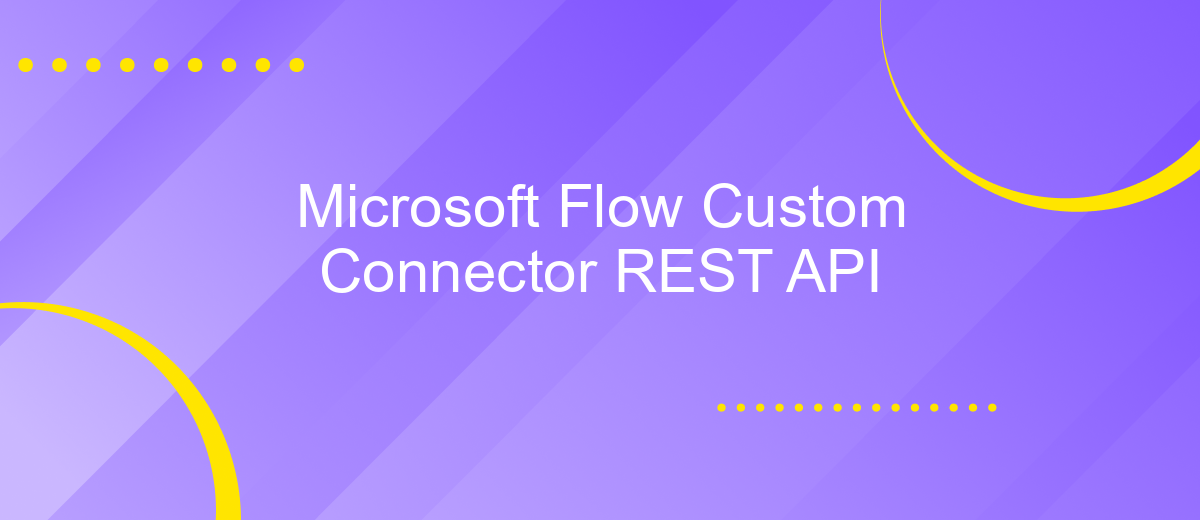Microsoft Flow Custom Connector REST API
Microsoft Flow, now known as Power Automate, offers a powerful platform for automating workflows across various applications and services. By leveraging Custom Connectors, users can extend Power Automate’s capabilities to interact with any REST API, enabling seamless integration with external systems. This article explores the process of creating and configuring a Custom Connector, empowering users to tailor their automation solutions to meet specific business needs efficiently and effectively.
Introduction
Microsoft Flow, now known as Power Automate, is a powerful tool that allows users to automate workflows between applications and services. One of its standout features is the ability to create custom connectors, enabling users to connect to any REST API. Custom connectors provide a flexible way to integrate third-party services and extend the capabilities of Power Automate beyond the built-in connectors. This functionality is particularly beneficial for businesses that rely on specialized software solutions.
- Seamless integration with third-party services
- Enhanced automation capabilities
- Customization tailored to specific business needs
- Access to a broader range of APIs
- Improved efficiency and productivity
By leveraging custom connectors in Power Automate, organizations can streamline processes and enhance their workflow automation. The ability to connect with a wide variety of REST APIs opens up new possibilities for innovation and efficiency. Whether it's integrating with a CRM, managing data across platforms, or automating routine tasks, custom connectors empower users to create robust and tailored solutions. As businesses continue to evolve, the need for adaptable and scalable automation tools like Power Automate becomes increasingly essential.
Authentication

When setting up a Microsoft Flow Custom Connector for a REST API, authentication is a critical step to ensure secure and authorized access to your API. Depending on the API you're connecting to, you may need to use various authentication methods such as API Key, OAuth 2.0, or Basic Authentication. Each method requires specific credentials or tokens, which must be correctly configured within your custom connector settings. Ensure that your authentication details are securely stored and managed to prevent unauthorized access.
To simplify the integration process, consider using services like ApiX-Drive, which can streamline the authentication setup by providing a user-friendly interface and automated workflows. ApiX-Drive supports various authentication methods, allowing you to quickly connect your Microsoft Flow Custom Connector with the desired API. By leveraging such services, you can reduce the complexity of manual configuration, minimize errors, and enhance the security of your integrations. Always test your authentication setup thoroughly to confirm that it functions as expected before deploying your custom connector in a production environment.
Connector Schema

The Connector Schema in Microsoft Flow Custom Connector defines the structure and behavior of the API interactions. It serves as a blueprint for how data is exchanged between the flow and the external service. This schema is crucial for ensuring that data is correctly formatted and understood by both parties involved in the communication process.
- Define the API operations: Specify the HTTP methods (GET, POST, PUT, DELETE) and the endpoints for each operation.
- Configure request parameters: Detail the required and optional parameters, including headers, query strings, and path variables.
- Set up response handling: Outline the expected response formats, status codes, and error handling procedures.
By meticulously crafting the Connector Schema, developers can ensure seamless integration and data flow between Microsoft Flow and external APIs. This schema not only enhances the reliability of the connections but also provides a clear framework for troubleshooting and future updates. Properly defined schemas are essential for maintaining the integrity and efficiency of automated workflows.
Operation Structure

When working with Microsoft Flow Custom Connector and REST API, understanding the operation structure is crucial for seamless integration. Each operation in a custom connector represents a specific action that can be performed against the API. These operations are defined by their HTTP method, URL, headers, and request/response schemas.
To define an operation, you start by specifying the HTTP method, such as GET, POST, PUT, or DELETE, which indicates the type of request being made. The URL is the endpoint of the API where the request is sent. Headers are optional and can include additional information like authentication tokens or content types. Request and response schemas define the structure of data being sent and received.
- HTTP Method: Defines the type of request (e.g., GET, POST).
- URL: The endpoint where the API request is directed.
- Headers: Optional metadata like authentication details.
- Request Schema: Structure of data being sent to the API.
- Response Schema: Structure of data expected in response.
By carefully configuring each component of the operation, you ensure that your custom connector communicates effectively with the REST API. This setup allows for robust data exchange and enhances the functionality of your Microsoft Flow applications.
- Automate the work of an online store or landing
- Empower through integration
- Don't spend money on programmers and integrators
- Save time by automating routine tasks
REST API Reference
Microsoft Flow Custom Connector allows users to integrate various services and automate workflows by leveraging REST API capabilities. This feature provides developers the flexibility to create connectors that interact with third-party APIs, extending the functionality of Microsoft Flow. To create a custom connector, users need to define the API's endpoints, authentication methods, and request/response structures. This process ensures seamless communication between Microsoft Flow and external services, enhancing productivity and automation.
Integrating multiple services can be further streamlined using platforms like ApiX-Drive, which offers tools to simplify API interactions. ApiX-Drive provides a user-friendly interface for setting up integrations without complex coding, making it easier to connect different applications. By utilizing such platforms alongside Microsoft Flow Custom Connector, organizations can optimize their workflows and ensure efficient data exchange across diverse systems. This combination empowers businesses to automate processes and reduce manual efforts, leading to increased operational efficiency.
FAQ
What is a Microsoft Flow Custom Connector?
How do I create a Custom Connector in Microsoft Flow?
What authentication methods are supported by Microsoft Flow Custom Connectors?
Can I use a Custom Connector to integrate with any REST API?
Are there services that can assist with setting up API integrations for Microsoft Flow?
Strive to take your business to the next level, achieve your goals faster and more efficiently? Apix-Drive is your reliable assistant for these tasks. An online service and application connector will help you automate key business processes and get rid of the routine. You and your employees will free up time for important core tasks. Try Apix-Drive features for free to see the effectiveness of the online connector for yourself.


